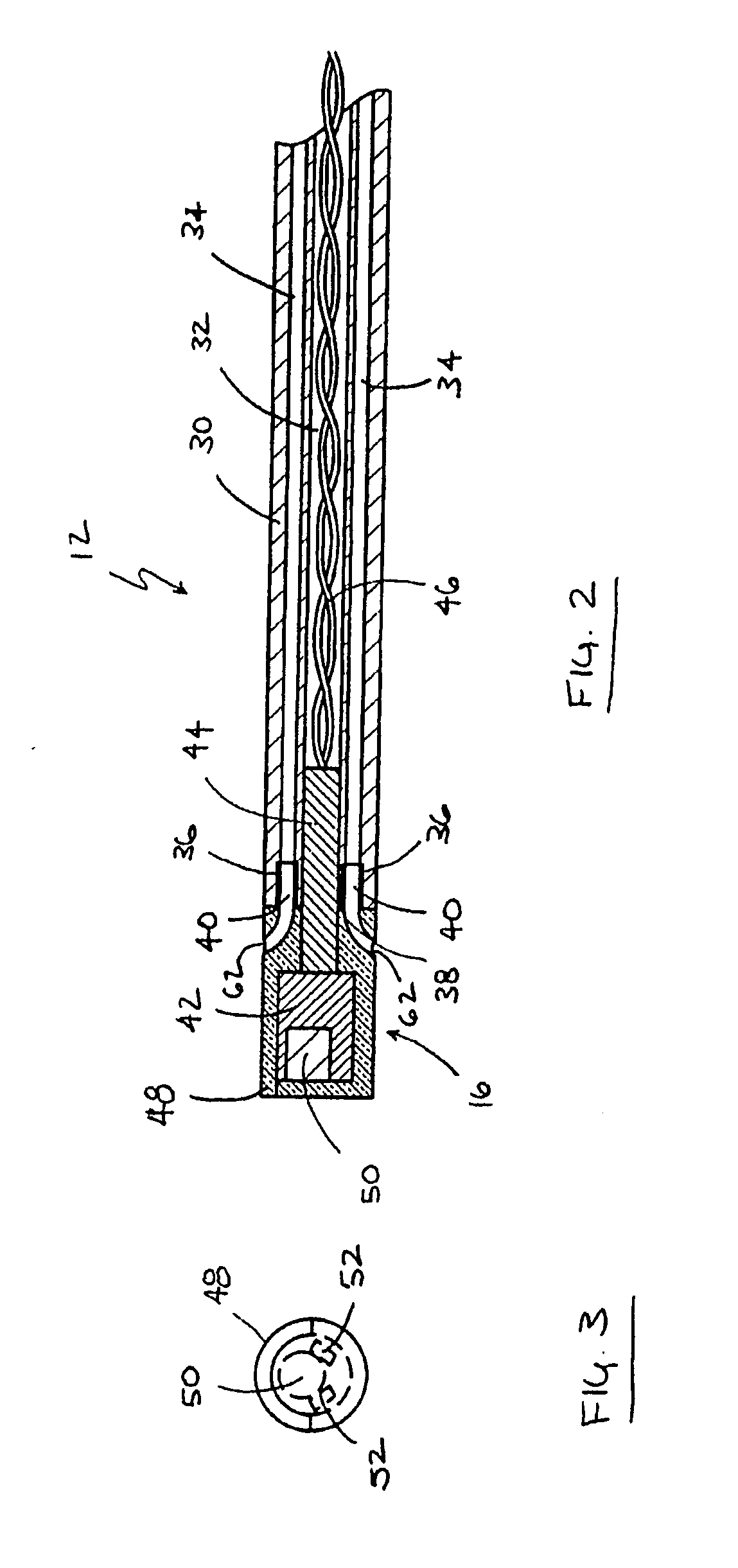Optical surgical device and methods of use
a surgical device and optical technology, applied in the field of optical surgical devices and methods for imaging body tissue, can solve the problems of limited application, high cost of colposcope and clinical training required to perform colposcope, and inability to use, so as to reduce the risk of perforation
- Summary
- Abstract
- Description
- Claims
- Application Information
AI Technical Summary
Benefits of technology
Problems solved by technology
Method used
Image
Examples
Embodiment Construction
[0121] The present invention is directed to an optical device, or endoscope, for use during medical procedures to view body tissue. The device may be constructed from detachable portions that may be reused or discarded as desired so that cleaning and sterilization may be simplified.
[0122] Referring to FIG. 1, an embodiment of the optical device will be described. Optical device 10 generally includes a shaft 12, handle 14 and camera assembly 16. Shaft 12 extends between handle 14 and camera assembly 16 and may be generally flexible. Shaft 12 may be configured so that after it is bent by a user it retains the bent configuration but may be easily reconfigured if desired. Such behavior is referred to herein as “shapeability,” and may be achieved by embedding stiffening members, such as stiffening wires, or blades, in the shaft as will be described in greater detail below. Fluid connectors 29 may also be provided so that fluid may be injected or aspirated through fluid conduits in shaft...
PUM
 Login to View More
Login to View More Abstract
Description
Claims
Application Information
 Login to View More
Login to View More - R&D
- Intellectual Property
- Life Sciences
- Materials
- Tech Scout
- Unparalleled Data Quality
- Higher Quality Content
- 60% Fewer Hallucinations
Browse by: Latest US Patents, China's latest patents, Technical Efficacy Thesaurus, Application Domain, Technology Topic, Popular Technical Reports.
© 2025 PatSnap. All rights reserved.Legal|Privacy policy|Modern Slavery Act Transparency Statement|Sitemap|About US| Contact US: help@patsnap.com



